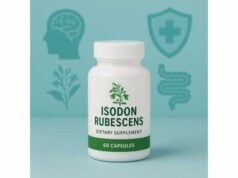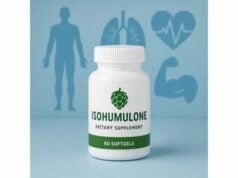
Issatchenkia orientalis is a resilient, acid-tolerant yeast better known today by its current scientific name Pichia kudriavzevii; in clinical settings it has also been called Candida krusei. It thrives in harsh, low-pH environments that inhibit many microbes, which is why it frequently appears in spontaneous fermentations of cocoa, coffee, sourdough and certain fruit pickles. That same robustness makes it valuable in industrial biotechnology—for producing ethanol and organic acids—and the very reason it can occasionally cause opportunistic infections in vulnerable people. This guide explains what the organism is (and why the names differ), where it truly adds value, when it is risky, how to interpret product labels, and what “dosage” does—and doesn’t—mean for consumers. You’ll also find practical advice to avoid common pitfalls, a sober look at the evidence, and clear safety guidance if you encounter I. orientalis in foods or in marketed “probiotic” products.
Key Insights
- Main benefits are industrial and culinary: robust fermentation at low pH, flavor development, and tolerance of heat and stress.
- Not a standard human supplement; no evidence-based oral dose exists for wellness use.
- If present in foods or capsules, typical live counts range widely (≈10⁶–10⁹ CFU/serving); internal use is not recommended for immunocompromised individuals.
- Avoid supplementation in pregnancy, during serious illness, and in anyone with central lines, recent surgery, or antifungal-treated infections.
Table of Contents
- What is Issatchenkia orientalis and why names differ
- Does it offer real benefits for humans?
- Food and biotech uses that make sense
- Why probiotic supplementation is not recommended
- If you encounter it in foods: what to do
- Safety, who should avoid, and possible interactions
- Evidence summary and research gaps
What is Issatchenkia orientalis and why names differ
One organism, several names. In microbiology, names change as researchers compare genomes and life cycles. Issatchenkia orientalis is the historical teleomorph name (sexual form). The currently accepted name in food and biotechnology is Pichia kudriavzevii. In clinical microbiology, the same species has long been reported as Candida krusei (an asexual/clinical alias). These multiple labels describe the same yeast, but they signal very different contexts:
- Pichia kudriavzevii → food, beverage, and industrial biotechnology.
- Candida krusei → clinical isolates from infections, notable for intrinsic resistance to fluconazole, a common antifungal.
Natural habitat and traits. I. orientalis is a so-called non-conventional yeast because it differs from baker’s yeast (Saccharomyces cerevisiae). It tolerates low pH (≈2–3), elevated temperatures (often 37–45 °C), and osmotic stress. It grows on fruits, cacao/coffee fermentations, sourdoughs, and acidic brines where many microbes struggle. Its physiology includes efficient sugar transporters, organic-acid tolerance mechanisms, and robust stress responses—features prized in certain fermentations.
What it is not. It is not a universal probiotic for humans. Unlike well-characterized probiotics such as Saccharomyces boulardii or selected Lactobacillus/Bifidobacterium strains, I. orientalis lacks standardized clinical evidence for health outcomes in people, and its clinical alias (C. krusei) flags opportunistic infection risk in compromised hosts.
Why these distinctions matter. When you see P. kudriavzevii on a technical sheet for cocoa fermentation, that’s a beneficial process ally. When a supplement markets I. orientalis capsules for gut health, the product enters medical territory without clinical backing, and the safety calculus changes—especially for high-risk users.
Bottom line: Treat the names as context markers. In food/biotech, this yeast is useful. As a consumer supplement, it’s unproven and raises avoidable safety questions.
Does it offer real benefits for humans?
Direct human health claims: At present, there’s no robust, replicated clinical evidence that I. orientalis supplementation improves digestive comfort, immunity, or other health outcomes. Small in-vitro or animal-model signals cannot justify routine human use. If you’ve seen claims of “balance,” “detox,” or “resilience,” they are extrapolations from fermentation performance—not human trials.
Dietary context: Indirectly, the yeast can impact humans by improving foods—shaping flavor, aroma, acidity, and sometimes micronutrient availability in traditionally fermented products. For example:
- In cacao or coffee fermentations, it helps lower pH, facilitates pulp breakdown, and produces aroma precursors that later roast into chocolatey or coffee notes.
- In fruit pickles or idli/dosa batters (regional foods), it may co-exist with lactic bacteria, tolerating acid while contributing to flavor complexity.
- In sourdough ecosystems, it can appear transiently, influencing early dough acidification and competing with spoilage microbes.
Industrial/bioprocess benefits that don’t translate to supplements:
- Organic acids and ethanol: Its acid tolerance and heat robustness enable production of lactic, succinic, or other acids and bioethanol from harsh substrates or under conditions intolerable to S. cerevisiae.
- Biocontrol potential: In postharvest settings, some strains can inhibit spoilage fungi on fruits—an applied agricultural benefit rather than a human health supplement effect.
When people report feeling better: If someone feels an improvement while consuming a product containing P. kudriavzevii, likely contributors include dietary pattern changes, hydration, fiber, or co-ingredients (e.g., polyphenols in fermented fruit), rather than a specific, proven probiotic action of the yeast.
Practical expectation: Value I. orientalis for what it does in vats and fermenters—not as a pill for people. If your goal is gut support, prioritize evidence-backed probiotics and, even more important, consistent dietary fiber and fermented foods with established safety records.
Food and biotech uses that make sense
1) Flavor-forward, low-pH fermentations.
Because I. orientalis thrives when acidity rises and sugars change, it is a strong early colonizer in cacao and coffee fermentations. Its metabolism helps liberate pulp, release aroma precursors, and set the stage for later microbial players. The result—after roasting—can be richer chocolate or coffee profiles. In fruit pickles and some artisanal beverages, selected strains may tolerate brines that would stall other yeasts.
2) Heat and stress resilience.
In industrial contexts, processes that run at elevated temperatures benefit from a yeast that stays active without constant cooling. P. kudriavzevii often remains productive where S. cerevisiae loses efficiency, helping lower energy costs and reduce contamination risk (fewer competitors survive).
3) Organic-acid production.
When engineered or selectively adapted, this yeast can produce lactic or succinic acid at industrially relevant titers—even under harsh conditions (low pH, inhibitory by-products). That matters for bioplastics precursors, food acidulants, and green chemistry routes replacing petrochemical steps.
4) Low-cost substrate valorization.
Agrifood wastes—acidic fruit pulps, spent coffee grounds hydrolysates, and mixed-sugar streams—often defeat sensitive microbes. I. orientalis can co-ferment mixed sugars and tolerate inhibitors, unlocking circular-economy value from side streams.
5) Biocontrol and shelf-life assistance.
On postharvest fruit, safe, well-characterized strains can help suppress spoilage molds as part of integrated pest management. This reduces reliance on synthetic fungicides and may extend shelf life modestly when paired with good storage practices.
6) What to demand from suppliers.
If you’re a formulator or buyer, request full strain identification, whole-genome or fingerprinting data, stress-tolerance profiles, and safety documentation (e.g., absence of virulence markers, antifungal susceptibility panels). In food plants, implement HACCP steps to segregate industrial cultures from clinical environments and to prevent unintended environmental release.
Key translation: All of these are process benefits. They justify the yeast’s role in food manufacturing and industrial biotech, not generalized human supplementation.
Why probiotic supplementation is not recommended
Clinical alias flags risk. The same species appears in hospitals as Candida krusei, an opportunistic pathogen primarily affecting people with serious underlying conditions (hematologic malignancy, recent chemotherapy, central venous catheters, prolonged ICU stays) or broad-spectrum antibiotic exposure. While healthy people rarely develop invasive disease, the clinical precedent matters when considering routine ingestion of concentrated capsules.
Drug resistance concern. C. krusei is intrinsically resistant to fluconazole, a first-line antifungal. That doesn’t mean it’s untreatable—other agents can work—but intrinsic resistance narrows options, complicates therapy, and is a strong reason not to popularize the organism as a consumer probiotic.
Dose and exposure are uncontrolled. Commercial “probiotic” products typically aim for 10⁹ CFU/day of selected, well-studied microbes. For I. orientalis, there is no standardized safe dose, no established clinical endpoint, and no consensus “benefit window.” More cells do not necessarily mean better outcomes; they can mean more risk in susceptible hosts.
Confusion with safe yeasts. Consumers and even retailers sometimes conflate I. orientalis with Saccharomyces boulardii, a yeast with randomized-trial support for reducing antibiotic-associated diarrhea in some settings. They are different organisms with different safety profiles and drug-response implications.
Bottom line: For the general public, benefit is speculative, risk is small but serious in the wrong host, and treatment complexity rises if infection occurs. That calculus does not favor routine supplementation.
If you encounter it in foods: what to do
Seeing it on a label. Fermented foods rarely list every microbe involved; when they do, it’s usually in starter culture products or artisanal goods that celebrate their microbiome. If P. kudriavzevii appears:
- Healthy adults can generally consume properly fermented, pasteurized, or shelf-stable products without special concern.
- Immunocompromised consumers should stick to pasteurized or shelf-stable items and avoid live-culture products that include non-standard microbes.
Home fermentation best practices:
- Start clean: sanitize vessels and tools; use dedicated fermenters to avoid cross-contamination with clinical or environmental isolates.
- Use known starters: if you want predictable results, choose commercial, food-grade mixed starters from reputable vendors rather than trying to enrich wild strains of P. kudriavzevii.
- Control pH and temperature: verify that your process reaches target acid and temperature profiles; discard batches that develop off-odors, slime, or mold growth.
- Finish with heat for safety: for vulnerable family members, consider post-fermentation pasteurization to keep flavor benefits while reducing viable counts.
Travel and artisanal foods. Traditional ferments made by experienced producers are generally safe for healthy people. When in doubt, prefer products with testing and lot tracking. If you’re recovering from surgery, undergoing chemotherapy, or have central lines, avoid unpasteurized ferments until cleared by your medical team.
Sensitivity and intolerance. A small subset of people report bloating or discomfort with wild ferments. If a particular product consistently causes symptoms, switch to pasteurized versions or ferments made with well-characterized lactobacilli or S. boulardii, which have better human data.
Summary for consumers: Enjoy the flavor advantages this yeast can help create in foods produced by reputable makers. Skip pills, keep high-risk loved ones on pasteurized options, and manage your kitchen like a mini-food plant.
Safety, who should avoid, and possible interactions
Who should avoid products containing live Issatchenkia/Pichia cells:
- People with weakened immunity: hematologic cancers, post-transplant, high-dose steroids, neutropenia.
- Hospitalized patients or those with central venous catheters: any live-microbe product increases theoretical bloodstream risk.
- Patients on antifungals (especially azoles): never self-supplement with yeasts.
- Pregnant or breastfeeding individuals and infants: lack of safety data; avoid intentional ingestion of live, non-standard yeasts.
Potential adverse effects:
- Fungemia (rare, serious): documented in compromised hosts, especially with central lines or intestinal barrier disruption.
- Allergy/hypersensitivity: uncommon, but any yeast can trigger reactions in sensitized individuals.
- GI symptoms: gas, bloating, or discomfort with high, uncharacterized live counts.
Drug and condition considerations:
- Azole antifungals: C. krusei is intrinsically fluconazole-resistant; exposure to fluconazole will not control the organism effectively. Medical teams choose alternatives when needed.
- Proton-pump inhibitors and antibiotics: these can alter GI ecology and theoretically increase colonization chances; avoid non-standard live yeasts during intensive therapy.
- Enteral feeding or probiotics via feeding tubes: never administer non-standard organisms; use only clinically endorsed strains where indicated, under medical supervision.
Quality and labeling red flags:
- Vague species names (“wild yeast blend”), no strain ID, no lot testing.
- Claims to “treat infections,” “replace antifungals,” or “detox heavy metals”—all inappropriate and misleading.
- High CFU counts without safety qualifications, especially in products marketed to vulnerable groups.
If exposure occurs and symptoms arise:
- Fever, chills, or new GI pain after taking a live-yeast product warrants prompt medical evaluation—bring the product to the visit.
- Clinicians should be told the exact species name(s) and formulation to guide targeted antifungal choices.
Pragmatic rule: If you are not explicitly seeking a specialized fermentation outcome, there’s no reason to ingest this organism intentionally. Safer, better-studied alternatives exist.
Evidence summary and research gaps
What lab and industrial studies show. Multiple open-access reviews and studies describe P. kudriavzevii as a rising workhorse in non-conventional yeast biotechnology. It tolerates acids and heat, performs in mixed-microbe systems, and persists where S. cerevisiae stalls. Under engineered conditions, it can produce organic acids and ethanol at meaningful titers from difficult substrates. These strengths underpin its growing role in food fermentation, waste valorization, and biocontrol.
What clinical literature shows. In hospitals, the same species (reported as Candida krusei) is a recognized opportunist with intrinsic resistance to fluconazole. While the absolute risk to healthy consumers from foods is low, this resistance profile matters for policy and prudence: popularizing an organism with antifungal resistance—without clear human benefit—does not serve public health.
Probiotic investigations: A handful of small, in-vitro or pilot studies test P. kudriavzevii strains for acid/bile tolerance and co-culture behavior. These are screening exercises, not clinical efficacy trials. There are no replicated, well-controlled human studies demonstrating health outcomes (e.g., reduced antibiotic-associated diarrhea) comparable to established probiotics.
Safety evaluations: Academic groups evaluating yeasts with probiotic potential emphasize strain-level safety—absence of virulence factors, susceptibility to frontline antifungals, and genomic stability. For I. orientalis, the species-level record (clinical alias + drug resistance) elevates the safety bar. Any proposed consumer strain would need exceptional documentation and post-market surveillance—an uncommon standard in the supplement aisle.
Research gaps that matter for consumers:
- Human RCTs assessing defined strains, doses (CFU), and endpoints.
- Comprehensive safety panels (antifungal susceptibility, virulence profiling) for candidate strains intended for ingestion.
- Real-world surveillance if consumer products are marketed, to detect rare but serious adverse events.
Bottom line: The evidence supports industrial and food-process uses, not routine human supplementation. Until clinical data and stringent safety frameworks exist, choosing better-studied probiotics and diverse, traditional ferments is the wiser path.
References
- Advances in the Application of the Non-Conventional Yeast Pichia kudriavzevii — 2023 (Review)
- Mechanism of Fluconazole Resistance in Candida krusei — 1998 (Mechanistic Review)
- Safety Evaluation of Yeasts With Probiotic Potential — 2021 (Safety Assessment)
- Towards unlocking the biocontrol potential of Pichia kudriavzevii — 2023 (Applied Microbiology)
- Fluconazole resistance in Candida species: a current perspective — 2017 (Review)
Medical Disclaimer
This article is educational and does not replace professional medical advice, diagnosis, or treatment. Issatchenkia orientalis (also known as Pichia kudriavzevii/Candida krusei) is useful in food and industrial fermentations but is not an evidence-based probiotic. Do not ingest products containing live I. orientalis if you are immunocompromised, pregnant, breastfeeding, recently hospitalized, or taking antifungals. Seek medical care promptly for fever, chills, or new symptoms after exposure to live-yeast products.
If you found this guide helpful, please consider sharing it on Facebook, X (formerly Twitter), or your preferred platform, and follow us for more people-first, evidence-aware health and food science content. Your support helps us continue producing high-quality resources.










